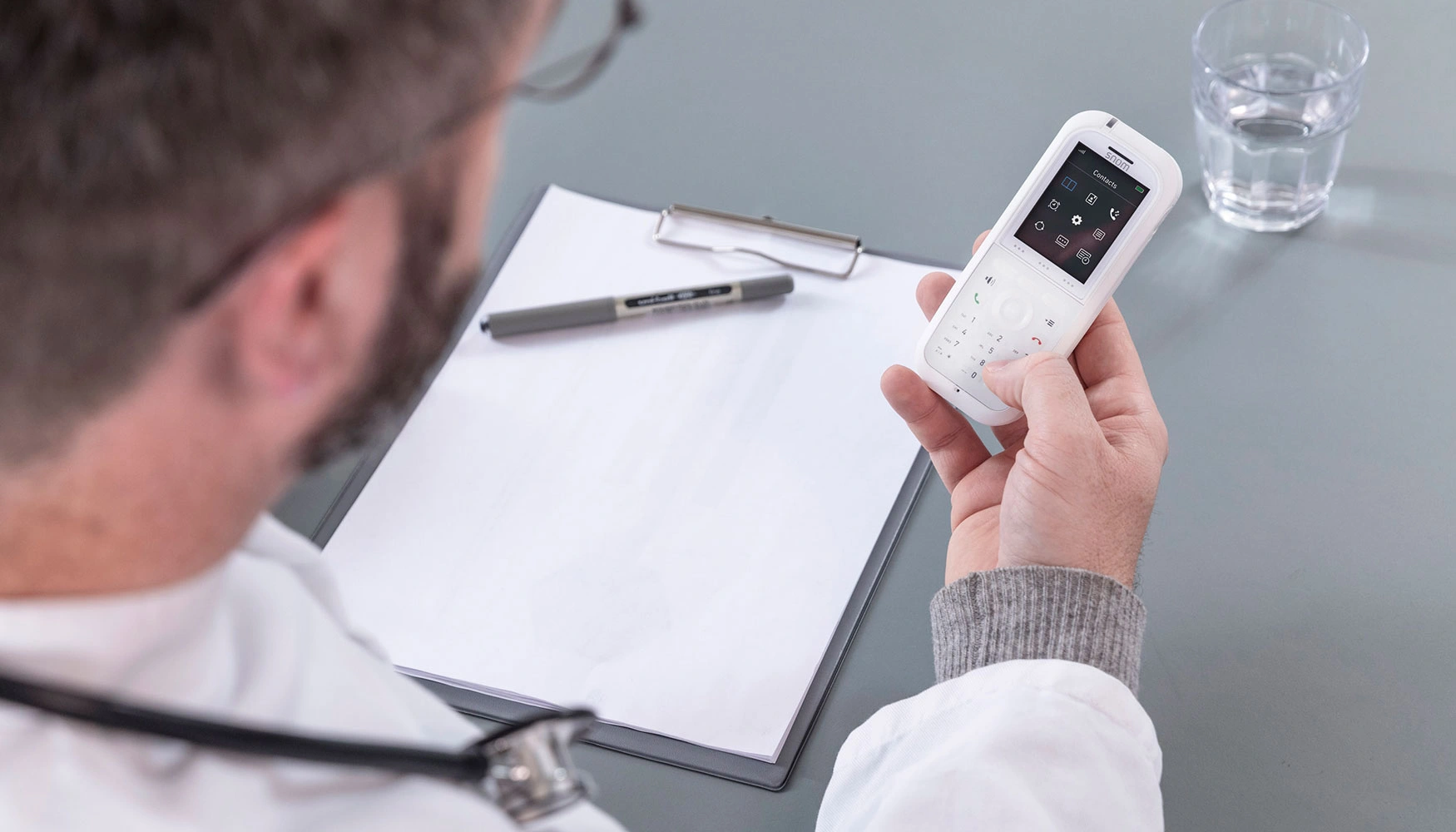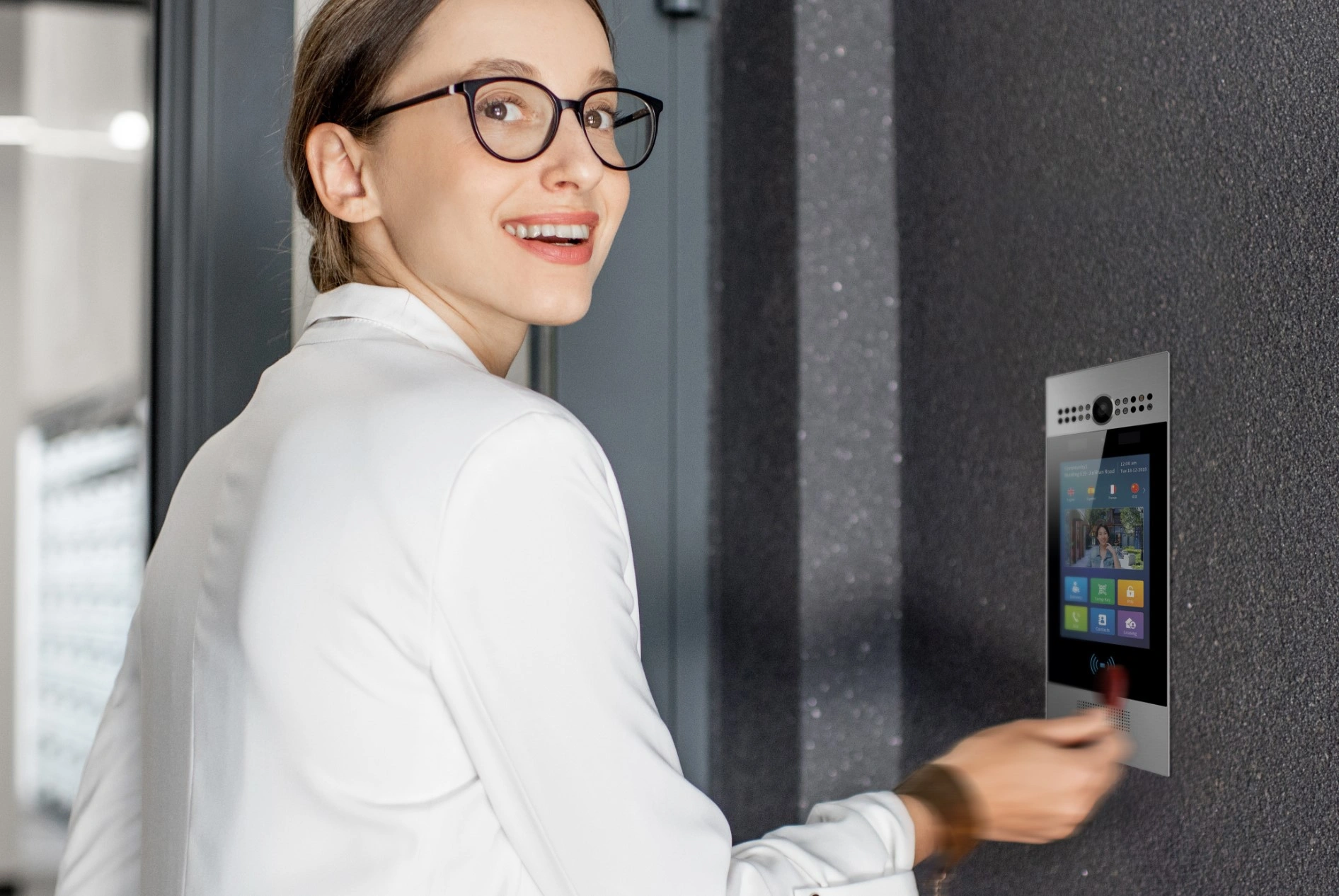How to Improve Communication with Your Teams and Residents?

DECT Phones
DECT (Digital Enhanced Cordless Telecommunication) phones are based on a primarily European technology using frequency bands of 1900 MHz.
The advantages of this technology are:
- Wide coverage distance.
- Very good audio quality.
- Ease of use.
- Reliability and security of transmissions.
- Low power consumption, thus high electrical autonomy.
The disadvantages are:
- Proprietary protocol.
- Additional infrastructure to networks.
- Non-interchangeable hardware between manufacturers.
- Only transmits voice and a few text messages.
- Low variety of equipment.
- Mainly concerns portable phones only.
- Does not support additional functionalities.
We find 2 European (and German) manufacturers with open solutions: SNOM and Gigaset Pro. These 2 manufacturers offer high-performance multi-cell operation. There are also 2 more closed but well-known manufacturers: Mitel and Avaya.
Resident Phones
Although residents increasingly have smartphones, these are rarely adapted for elderly individuals.
The necessary features are: large keypad buttons, a very readable large display, 3 to 4 direct call buttons possibly with photos, high-quality hearing, and ease of use.
That’s why opting for a fixed or cordless DECT phone is the best solution.
These phones can be called not only by external family members but also by internal staff, as these phones are integrated into the central system.
Fortunately, in most cases, it is not necessary to rewire the rooms to use this type of equipment. Existing phones can even be integrated.


Smartphones
Smartphones are increasingly overtaking other solutions.
The main reason is the ability to have a device capable of much more than just making phone calls.
The advantages are:
- Multitude of possible applications.
- Device with multiple sensors (NFC, Bluetooth).
- Supports both voice and messaging.
- Compatibility with many brands, thus a wide choice of devices.
The disadvantages are:
- Requires a high-performance, managed, and optimized WiFi infrastructure.
- Voice transmissions can be disrupted.
- Risk of call drop due to VoIP wake-up latency.
- Variable coverage gaps, especially in staircases, behind elevators, etc.
- High power consumption, leading to low battery life.
Of course, it is necessary to have durable equipment with good water and dust resistance. Fortunately, more and more models of all sizes are available.
Intercoms & Video Intercoms
Intercoms are now an integral part of the telephone system. They benefit from the same rules and capabilities as traditional phones.
These intercoms mainly allow controlling access to the site from the outside. When the call button is pressed, staff can communicate with the visitor to grant or deny entry.
The person receiving the call then inputs a code on their phone, which remotely triggers the opening of the door via an electric or magnetic strike.
When the intercom has a camera, and provided the receiving phone has the capability, it is possible to view the entrance and see the visitor's face.
Depending on the desired features, there are intercoms with a keypad and RFID tag readers for granting access to authorized personnel.
Thanks to the capabilities of the IP system, during the day, calls can go to administrative services or infirmaries, while in the evening and night, calls can be directed to the caregivers' mobile phones.


Intercoms
Intercoms, or intercom systems, are devices that allow hands-free communication, often over a certain distance.
They connect like fixed phones, to the network either via an Ethernet RJ45 cable or WiFi.
Their main feature is that they cannot make calls and automatically answer when receiving a call.
The primary use is to enable communication in various situations:
These intercoms, now also IP-based, are mainly used in rooms and fulfill three functions:
- During a call, the system can communicate updates on the intervention. These messages provide reassurance and allow for waiting.
- Of course, during a call, the caregiving staff can contact the resident to request additional information.
- It is also possible to broadcast general communication messages, such as starting an activity.
Fixed Phones
The available IP phones are numerous, and there is little difference in quality between brands or models.
The main differences lie in ergonomics. As for features, they are always the same, so there is little benefit in spending large sums on these devices.
The choice will focus on the screen size, the ability to view images, and the number of direct access buttons.
Ask us for advice. Unlike you, Groovit has extensive experience with different models. We know the hidden aspects of phones, their ergonomics, and their ease of use.
